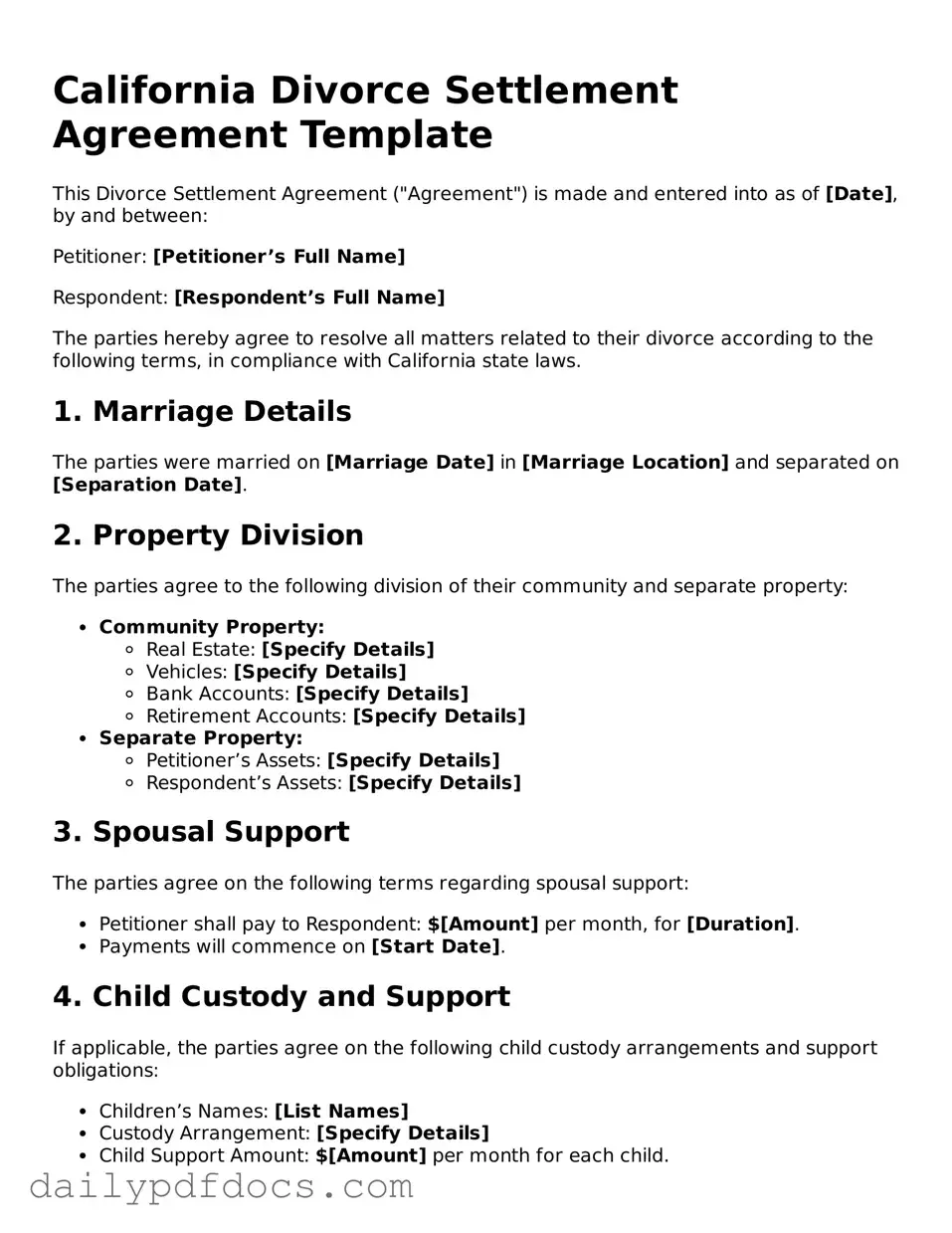California Divorce Settlement Agreement Template
This Divorce Settlement Agreement ("Agreement") is made and entered into as of [Date], by and between:
Petitioner: [Petitioner’s Full Name]
Respondent: [Respondent’s Full Name]
The parties hereby agree to resolve all matters related to their divorce according to the following terms, in compliance with California state laws.
1. Marriage Details
The parties were married on [Marriage Date] in [Marriage Location] and separated on [Separation Date].
2. Property Division
The parties agree to the following division of their community and separate property:
- Community Property:
- Real Estate: [Specify Details]
- Vehicles: [Specify Details]
- Bank Accounts: [Specify Details]
- Retirement Accounts: [Specify Details]
- Separate Property:
- Petitioner’s Assets: [Specify Details]
- Respondent’s Assets: [Specify Details]
3. Spousal Support
The parties agree on the following terms regarding spousal support:
- Petitioner shall pay to Respondent: $[Amount] per month, for [Duration].
- Payments will commence on [Start Date].
4. Child Custody and Support
If applicable, the parties agree on the following child custody arrangements and support obligations:
- Children’s Names: [List Names]
- Custody Arrangement: [Specify Details]
- Child Support Amount: $[Amount] per month for each child.
5. Debt Division
The parties will be responsible for the following debts:
- Joint Debts: [Specify Details]
- Individual Debts: [Specify Details]
6. Other Provisions
The parties agree to the following additional terms:
- Health Insurance: [Specify Details]
- Tax Obligations: [Specify Details]
- Other: [Specify Details]
7. Governing Law
This Agreement shall be governed by the laws of the State of California.
8. Signatures
By signing below, both parties acknowledge that they understand and agree to the terms outlined in this Agreement.
Petitioner Signature: __________________________ Date: _______________
Respondent Signature: _________________________ Date: _______________
This Divorce Settlement Agreement is intended to be a comprehensive document covering all aspects of property division, support, custody, and other relevant matters. It reflects the mutual agreement of the parties concerning these issues.
